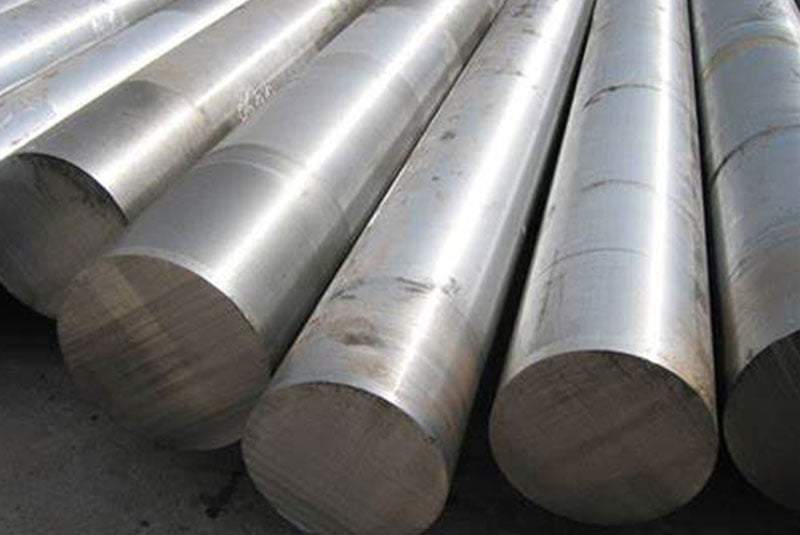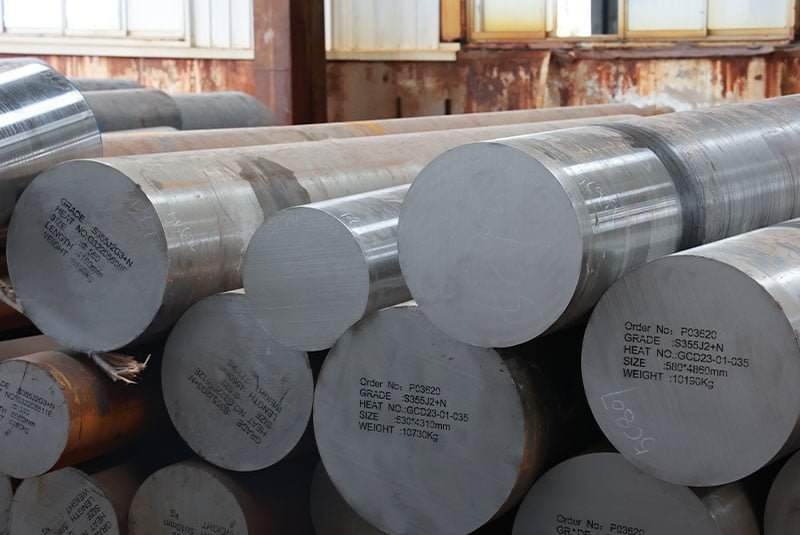Welcome to My Blog!
Before we dive into the content, I’d love for you to join me on my social media platforms where I share more insights, engage with the community, and post updates. Here’s how you can connect with me:
Facebook:https://www.facebook.com/profile.php?id=100085401406977
LinkedIn:https://www.linkedin.com/showcase/102680001/admin/dashboard/
Now, let’s get started on our journey together. I hope you find the content here insightful, engaging, and valuable.
Introduction

In the world of manufacturing, material selection plays a crucial role in determining the durability, efficiency, and cost-effectiveness of products. Among the various materials available, stainless steel has remained a top choice for many industries due to its exceptional properties. One particular variant that has gained significant attention in recent years is 410L stainless steel. Known for its unique blend of mechanical properties and corrosion resistance, 410L stainless steel is widely used in various manufacturing processes. This article will delve into the benefits of 410L stainless steel, its applications, and why it is a preferred choice for many manufacturers.
What is 410L Stainless Steel?
Composition and Properties of 410L Stainless Steel
410L stainless steel is a low-carbon variant of 410 stainless steel, which belongs to the ferritic family of stainless steels. The “L” in 410L indicates the lower carbon content, which enhances certain properties, particularly in terms of corrosion resistance and weldability. The typical composition of 410L stainless steel includes:
- Chromium (Cr): 11.5-13.5%
- Carbon (C): 0.03% max
- Manganese (Mn): 1.0% max
- Silicon (Si): 1.0% max
- Phosphorus (P): 0.04% max
- Sulfur (S): 0.03% max
These elements work together to provide 410L stainless steel with its distinct characteristics, such as good hardness, moderate corrosion resistance, and excellent weldability.
Key Characteristics of 410L Stainless Steel
- Corrosion Resistance: While not as corrosion-resistant as austenitic grades, 410L stainless steel still offers good resistance to atmospheric conditions, mild acids, and alkalis.
- Hardness and Strength: 410L maintains good hardness and strength, making it suitable for applications where mechanical wear is a concern.
- Weldability: The low carbon content improves weldability, reducing the risk of weld decay and making it easier to fabricate complex structures.
- Magnetic Properties: As a ferritic stainless steel, 410L exhibits magnetic properties, which can be an advantage in certain applications.
Benefits of Using 410L Stainless Steel in Manufacturing
Enhanced Corrosion Resistance for Industrial Applications
One of the primary benefits of using 410L stainless steel in manufacturing is its enhanced corrosion resistance. Although it doesn’t offer the same level of protection as higher-alloyed stainless steels, its resistance to atmospheric corrosion, fresh water, and mild chemicals makes it suitable for various industrial applications. This includes the manufacturing of components exposed to the elements, such as outdoor structures, automotive parts, and machinery components.
Improved Weldability for Fabrication Ease
Weldability is a critical factor in manufacturing, especially when producing complex structures that require multiple joints. The low carbon content in 410L stainless steel reduces the risk of carbide precipitation during welding, which can lead to intergranular corrosion. This makes 410L an ideal choice for industries that rely on welding as a key part of their fabrication process, such as the construction of pressure vessels, pipelines, and structural components.
Cost-Effective Alternative to High-Alloy Stainless Steels
Manufacturers often face the challenge of balancing material costs with performance requirements. 410L stainless steel provides a cost-effective alternative to higher-alloyed stainless steels while still offering adequate performance in terms of strength, hardness, and corrosion resistance. This makes it a popular choice for applications where extreme corrosion resistance is not critical, but where cost savings are a priority.
Versatility in Manufacturing Processes
The versatility of 410L stainless steel is another significant benefit. It can be easily formed, machined, and welded, making it suitable for a wide range of manufacturing processes. Whether used in sheet metal fabrication, machining of components, or the production of welded structures, 410L stainless steel provides manufacturers with the flexibility they need to meet various production demands.
Application in High-Temperature Environments
410L stainless steel can maintain its strength and resist scaling at elevated temperatures, making it suitable for use in high-temperature environments. This includes applications such as heat exchangers, furnace components, and exhaust systems, where both corrosion resistance and thermal stability are essential.
Applications of 410L Stainless Steel in Various Industries

Automotive Industry
In the automotive industry, 410L stainless steel is used in the production of exhaust systems, mufflers, and other components that require a balance of corrosion resistance, strength, and cost-effectiveness. Its ability to withstand high temperatures and resist corrosion from exhaust gases makes it an ideal material for these applications.
Construction Industry
The construction industry benefits from 410L stainless steel in the fabrication of structural components, outdoor fixtures, and cladding materials. Its corrosion resistance ensures long-lasting performance, even in harsh environmental conditions, while its weldability allows for the creation of complex structures.
Chemical Processing Industry
In the chemical processing industry, 410L stainless steel is utilized in the manufacturing of tanks, piping systems, and heat exchangers that handle mildly corrosive substances. Its resistance to certain chemicals, combined with its mechanical properties, makes it a reliable choice for these applications.
Oil and Gas Industry
The oil and gas industry often requires materials that can withstand both corrosive environments and high mechanical stress. 410L stainless steel is used in the production of downhole tools, valves, and other components exposed to harsh operating conditions. Its balance of toughness, corrosion resistance, and cost-effectiveness makes it a valuable material in this sector.
Food Processing Industry
In the food processing industry, 410L stainless steel is used to manufacture equipment such as food-grade tanks, conveyors, and processing machinery. Its corrosion resistance ensures that it can handle various food products and cleaning agents without compromising hygiene or safety.
Comparison of 410L Stainless Steel with Other Stainless Steels
To better understand the benefits of 410L stainless steel, it’s helpful to compare it with other stainless steel grades. The following table provides a comparison of 410L stainless steel with other common stainless steels used in manufacturing:
| Property | 410L Stainless Steel | 304 Stainless Steel | 316 Stainless Steel | 430 Stainless Steel |
|---|---|---|---|---|
| Chromium Content | 11.5-13.5% | 18-20% | 16-18% | 16-18% |
| Carbon Content | 0.03% max | 0.08% max | 0.08% max | 0.12% max |
| Corrosion Resistance | Moderate | High | Very High | Moderate |
| Weldability | Excellent | Excellent | Good | Good |
| Magnetic Properties | Yes | No | No | Yes |
| Cost | Lower | Moderate | Higher | Lower |
Conclusion
In conclusion, 410L stainless steel offers a unique combination of properties that make it an excellent choice for various manufacturing applications. Its enhanced corrosion resistance, improved weldability, cost-effectiveness, and versatility make it a valuable material in industries ranging from automotive to chemical processing. By understanding the benefits of 410L stainless steel, manufacturers can make informed decisions that optimize both performance and cost in their production processes.
Whether you are involved in the production of automotive components, structural materials, or chemical processing equipment, 410L stainless steel provides the reliability and performance you need to meet your manufacturing goals. As the demand for durable and cost-effective materials continues to grow, 410L stainless steel remains a strong contender for a wide range of applications.
FAQs About 410L Stainless Steel
What is the Difference Between 410L Stainless Steel and 410 Stainless Steel?
The primary difference between 410L stainless steel and 410 stainless steel is the carbon content. 410L stainless steel has a lower carbon content, which improves its weldability and reduces the risk of weld decay. This makes 410L more suitable for applications that involve welding or where enhanced corrosion resistance is required.
Is 410L Stainless Steel Suitable for High-Temperature Applications?
Yes, 410L stainless steel is suitable for high-temperature applications. It can maintain its strength and resist scaling at elevated temperatures, making it an ideal material for heat exchangers, furnace components, and other high-temperature environments.
How Does 410L Stainless Steel Compare to 304 Stainless Steel in Terms of Corrosion Resistance?
While 410L stainless steel offers good corrosion resistance, 304 stainless steel provides higher corrosion resistance due to its higher chromium and nickel content. However, 410L is more cost-effective and has better weldability, making it a preferred choice in applications where extreme corrosion resistance is not critical.
Can 410L Stainless Steel Be Used in Food Processing Equipment?
Yes, 410L stainless steel can be used in food processing equipment. Its corrosion resistance ensures that it can handle various food products and cleaning agents without compromising hygiene or safety. It is commonly used in the manufacture of food-grade tanks, conveyors, and processing machinery.
What Industries Benefit Most from Using 410L Stainless Steel?
Industries that benefit most from using 410L stainless steel include automotive, construction, chemical processing, oil and gas, and food processing. Its combination of corrosion resistance, mechanical properties, and cost-effectiveness makes it a versatile material suitable for a wide range of applications in these sectors.
